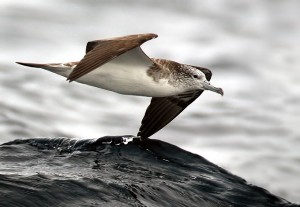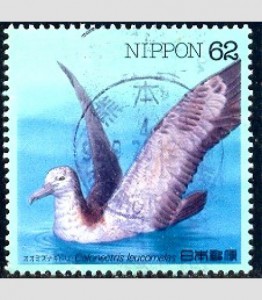Week 61 – 10 September 2017:
Go Outside and Play!
There can be no doubt that our parents’ commands to get some exercise were exactly what we needed to hear. The development of our young bodies benefitted from the exercise, and our coordination likely improved too. Playing outside was good for us. Might that sort of early exercise also benefit young birds?
The precocial young of many types of birds, including ducks and shorebirds, are ready to run almost as soon as they hatch out of their eggs. For many other birds, altricial species, there is a prolonged period of growth and development before chicks are ready to leave the nest. As the date for departure approaches, young birds in the nest can be seen flapping their wings. This behaviour presumably aids in all-important growth and coordination required for survival after leaving the nest. The issue of crucial pre-fledging exercise is probably particularly acute for seabirds that nest at the ends of tunnels, where room to stretch is at a premium.
The Streaked Shearwater is a seabird that breeds on islands off the coasts of China and Japan. According to the International Union for the Conservation of Nature, it is near-threatened, and with a declining global population. In order to help avoid arrested development of their muscular and nervous systems, young Streaked Shearwaters are known to periodically emerge for brief excursions before returning to their nests. While outside the nests, the chicks were thought to exercise their wings. This behaviour is considered to be quite common among burrow-nesting seabirds, but it has been poorly studied, particularly since it almost always happens at night.
Ken Yoda and his colleagues at Nagaoka University and Nagaoka University of Technology in Japan studied the exercising behaviour of young Streaked Shearwaters in the period leading up to fledging. The study was conducted in 2013 and 2015 on Japan’s Awashima Island. Infrared video cameras placed in front of the entrances to shearwater nests documented the time at which chicks emerged from, and then returned to, their nests. Some chicks were also fitted with acceleration-temperature devices that logged the period that chicks spent flapping. Chicks were weighed, the length of their wings measured, and their ages estimated.
Of the twenty chicks studied, Yoda and his team documented 805 excursions. The average age of first emergence from the nest was 68 days after hatching; this was fifteen days before the typical chick fledged. Excursions averaged 32 minutes in duration, during which chicks were seen flapping their wings vigorously at a rate of four times per second for approximately six-and-a-half seconds.
Not every Streaked Shearwater chick behaved in exactly the same way. Yoda et al. discovered a positive relationship between the period that chicks spent exercising and their mass and wing length. More is better. Furthermore, chicks that exercised the most were able to leave the nest for the last time at a younger age.
The data presented a curious conundrum. “Our correlative evidence did not indicate whether high-quality growth promotes exercise or conversely whether exercise promotes high quality growth, but it is possible that both processes occur simultaneously.” Regardless of cause and effect, the study of Yoda and his coworkers indicated that the superior development of muscles and bones that accompanies exercise is likely to be linked to better survival of Streaked Shearwater chicks after they leave their nests.
So when you tell your children to go outside and play, you can feel entirely justified. Unlike Streaked Shearwater parents, you might even choose to spend time playing with your children.
Ken Yoda, et al. 2016. Preparation for flight: pre-fledging exercise time is correlated with growth and fledging age in burrow-nesting seabirds. Journal of Avian Biology 48: 881-886.
Photo credits: Streaked Shearwater (Calonectris leucomelas), © Robin Newlin – www.birdskorea.org; Streaked Shearwater stamp – www.hipstamp.com



